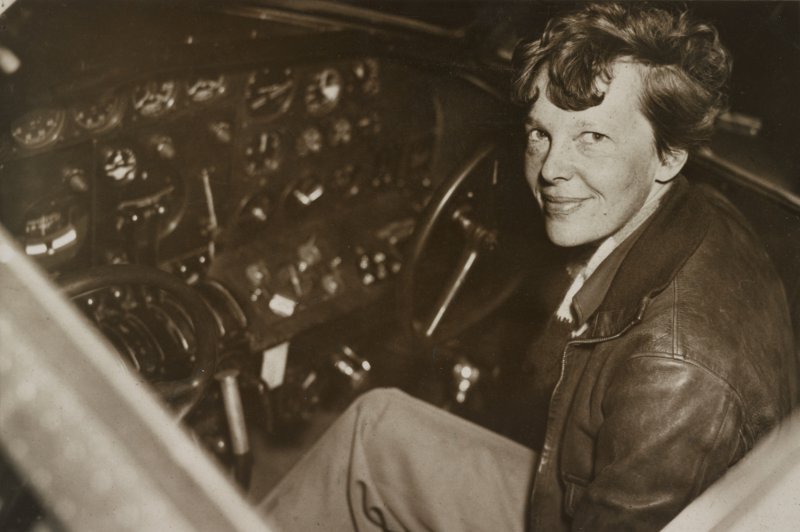Aviator Amelia Earhart, pictured sitting in the cockpit of the Electra, became the first woman to complete a solo transatlantic flight in 1932. She disappeared in 1937 on her second attempt to fly around the world. UPI file photo
OXFORD, Pa., Nov. 2 (UPI) -- New evidence suggests that Amelia Earhart died as a castaway on an uninhabited island rather than in a plane crash.
The International Group for Historic Aircraft Recovery reported it found similarities between Earhart, the first woman to complete a solo transatlantic flight in 1932, and the partial skeleton found on an uninhabited Pacific island in 1940.
Earhart was attempting to fly around the world in 1937 when her plane disappeared over the Pacific Ocean.
Forensic anthropologists and imaging experts compared measurements of the skeleton's arm bone to a historical photo of Earhart and found the measurements were "virtually identical."
"The match does not, of course, prove that the castaway was Amelia Earhart but it is a significant new data point that tips the scales further in that direction," researchers said in the report.
The bones originally were judged by a doctor to be male but TIGHAR discovered the original British files, including the skeletal measurements by the doctor.
"An evaluation of those measurements by forensic anthropologists Karen Burns, Ph.D. and Richard Jantz, Ph.D., led to the conclusion that 'the morphology of the recovered bones, insofar as we can tell by applying contemporary forensic methods to measurements taken at the time, appears consistent with a female of Earhart's height and ethnic origin,' " the project said.
After secretly completing the first leg from Oakland, Calif., Earhart and her navigator, Fred Noonan, headed east from Miami in July 1937, making several stops in South America, Africa, India and Southeast Asia before reaching Lae, New Guinea, completing more than two-thirds of the trip. Their plane, the Electra, took off from Lae Airfield bound for tiny Howland Island and disappeared in the southwestern Pacific Ocean. A Coast Guard search was unsuccessful and it was called off after two weeks.
The Earhart Project, based in Oxford, Pa., is attempting to prove she made an emergency landing and eventually died on uninhabited Nikumaroro island, part of the western Pacific republic of Kiribati.
"Until we started investigating the skeleton, we found what history knew was that Amelia Earhart died in July 2, 1937, in a plane crash," Ric Gillespie, TIGHAR's executive director, told CNN. "But there is an entire final chapter of Earhart's life that people don't know about. She spent days -- maybe months -- heroically struggling to survive as a castaway."
In August, the TIGHAR team revealed more than 100 radio transmissions July 2-6, 1937, were made calling for help.
"There are historical documents that prove official airlines received radio calls for help in 1937," Gillespie said. "If we look at the press of the time -- people believed she was still alive. It was only when planes were sent to fly over the islands where the distress signals were coming from and no plane was seen that the searches shifted towards the ocean."
Gillespie suspects that when rescue planes were sent out, Earhart's plane had already been dragged back into the ocean by the waves, and so was not visible.
"But she lived and died in that island for a while," Gillespie said.
Since the late 1990s, Gillespie has organized three archaeological expeditions to Nikumaroro.
"We found records of bonfires being lit in the area where the bones were found," he said. "Based on the fish bones and bird bones found in the area, Earhart survived weeks, maybe even months, in that island."
No other human remains were found in the area, and Gillespie suspects her navigator died soon after the crash and the body washed away by the ocean.
"We speculate Noonan died early on as she reported him being injured in the initial distress calls," said Gilepsie.
TIGHAR has tried to link a piece of aluminum sheeting and other evidence found on the island to her disappearance.















